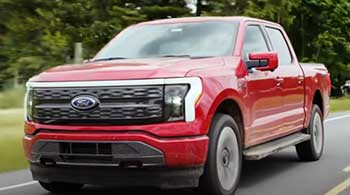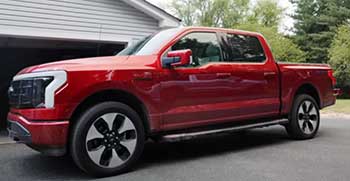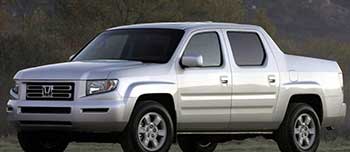
I’ve spent years behind the wheel of pickup trucks, hauling everything from camping gear to construction materials, and I’ve got a soft spot for the Ford F-150 and GMC Sierra 1500.
These two giants dominate the full-size pickup market, each with a loyal fanbase and a reputation for getting the job done.
My goal here is to break down their strengths and weaknesses, share my experiences, and help you decide which truck fits your life—whether you’re towing, off-roading, or just cruising.
Let’s explore their features, performance, and quirks to see which one comes out on top.
Comparison Table
| Feature | Ford F-150 (2025) | GMC Sierra 1500 (2025) |
|---|---|---|
| Starting MSRP | $39,645 | $40,495 |
| Base Engine | 3.3L V6 (290 hp, 265 lb-ft) | 2.7L TurboMax (310 hp, 430 lb-ft) |
| Top Engine | 5.2L Supercharged V8 (700 hp, 640 lb-ft) | 6.2L V8 (420 hp, 460 lb-ft) |
| Max Towing Capacity | 14,000 lbs (3.5L EcoBoost V6) | 13,300 lbs (3.0L Duramax Diesel) |
| Max Payload Capacity | 3,325 lbs | 2,410 lbs |
| Fuel Economy (City/Hwy) | 20/24 MPG (base engine) | 18/21 MPG (base engine) |
| Bed Lengths | 5.5 ft, 6.5 ft, 8 ft | 5.8 ft, 6.6 ft, 8.2 ft |
| Cab Configurations | Regular, SuperCab, SuperCrew | Regular, Double, Crew |
| Infotainment | 8-inch touchscreen (standard), 12-inch optional | 7-inch touchscreen (standard), 13.4-inch optional |
| Safety Rating (NHTSA) | 4.79/5 Stars | 4.40/5 Stars |
| Key Features | BlueCruise, Pro Power Onboard, Aluminum body | MultiPro Tailgate, Super Cruise, Diesel option |
My Experience With the Ford F-150
Driving the 2025 Ford F-150 feels like commanding a fortress on wheels. I’ve taken it through muddy trails, towed a trailer loaded with ATVs, and used it for daily commutes, and it’s never let me down. The F-150’s versatility is its biggest draw—whether I’m in the base XL trim or the luxurious Platinum, it adapts to my needs.
The cabin is a tech haven, with an intuitive touchscreen and enough storage to keep my tools organized. The aluminum body makes it lighter than competitors, which I notice in better fuel economy and nimble handling, especially off-road.
The engine lineup is a standout. I’ve driven the 3.5L EcoBoost V6, which pumps out 400 horsepower and feels like it could tow a house. The hybrid PowerBoost option is a game-changer for long hauls, blending power with efficiency.
On one trip, I towed a 10,000-pound trailer across state lines, and the F-150’s Pro Trailer Assist made backing up a breeze. The BlueCruise hands-free driving system also impressed me on highways, letting me relax while it handled steering and braking.
But it’s not perfect. The F-150’s price can climb fast with options, and I’ve had minor issues like a finicky seatbelt sensor in a 2022 model. Maintenance costs are slightly higher than I’d like, and the oil consumption on the 5.0L V8 gave me pause. Still, the F-150’s blend of power, tech, and capability makes it a truck I keep coming back to.
My Experience With the GMC Sierra 1500
The 2025 GMC Sierra 1500 feels like a luxury SUV disguised as a pickup. I’ve driven it on long road trips and through rugged job sites, and its refined interior and smooth ride always stand out. The Denali trim, with its leather seats and massive 13.4-inch touchscreen, makes me feel like I’m in a high-end sedan. The MultiPro tailgate is a genius feature—I’ve used it as a step, a workbench, and even a tailgate party table.
Performance-wise, the Sierra’s 3.0L Duramax diesel engine is a gem. On a cross-country drive, I averaged 29 MPG on the highway, which is unheard of for a truck this size. The 6.2L V8, with 420 horsepower, delivers serious grunt for towing, though it’s thirstier. I once hauled a 12,000-pound boat, and the Sierra’s torque kept it steady even on steep inclines. The Super Cruise system is a rival to Ford’s BlueCruise, offering hands-free driving that’s smooth and reliable.
However, the Sierra has its flaws. The base model’s interior feels cheap compared to the F-150, and I’ve heard grumbles about reliability, like a friend’s 2020 model needing a new timing chain at 93,000 miles. The steel body adds weight, which I felt in sluggish cornering compared to the F-150. Despite these, the Sierra’s upscale vibe and diesel efficiency make it a strong contender.
Pros Of the Ford F-150

- Versatile Engine Lineup: Six engine options, from a 3.3L V6 to a 700-hp supercharged V8, give you choices for efficiency or raw power. The hybrid PowerBoost is a standout for balancing both.
- Top-Notch Towing and Payload: With a max towing capacity of 14,000 pounds and a payload of 3,325 pounds, the F-150 outperforms the Sierra in raw capability.
- Aluminum Body Advantage: The lightweight aluminum construction improves fuel economy and reduces rust, which I’ve appreciated in wet climates.
- Advanced Tech Features: The 12-inch touchscreen, wireless Apple CarPlay, and BlueCruise hands-free driving make long trips comfortable and modern.
- Pro Power Onboard: This feature turns the truck into a mobile generator, powering tools or campsite gear—a lifesaver on remote jobs.
- Superior Safety Ratings: The F-150’s 4.79/5 NHTSA rating beats the Sierra, giving me confidence in its crash protection.
- Resale Value Edge: The F-150 retains 62.1% of its value after five years, slightly better than the Sierra’s 61.9%, which matters for long-term ownership.
The F-150’s strength lies in its adaptability. Whether I’m hauling lumber or taking the family on a road trip, it feels tailored to the task. The aluminum body saves about 150 pounds compared to the Sierra, which I notice in better MPG and agility. BlueCruise has been a game-changer on highways, and the Pro Power Onboard system once kept my crew’s tools running during a power outage. The higher safety rating and resale value give me peace of mind, knowing I’m investing in a truck that holds up over time.
Cons Of the Ford F-150
- Higher Maintenance Costs: Annual repair costs average $788, about $61 more than the Sierra, which adds up over years of ownership.
- Option Costs Stack Up: Fully loaded trims like the Platinum or Raptor can push the price past $80,000, making it less accessible for budget buyers.
- Oil Consumption Issues: My 2022 F-150 with the 5.0L V8 burned through 2.5 quarts of oil between changes, triggering check engine lights.
- Occasional Tech Glitches: I’ve had issues with the infotainment system freezing, requiring a reset, which is frustrating mid-drive.
- Base Model Feels Basic: The XL trim’s 8-inch touchscreen and cloth seats pale compared to the Sierra’s base offerings.
- No Diesel Option: Unlike the Sierra, the F-150 lacks a diesel engine, which is a drawback for those prioritizing fuel economy.
- Seatbelt Sensor Problems: A rear seatbelt issue in my 2022 model required multiple fixes, which was a hassle under warranty.
Read more: My Thoughts on GMC Terrain Vs. Ford Escape.
Cons Of the GMC Sierra 1500
- Heavier Steel Body: The Sierra’s steel construction adds weight, leading to slightly worse fuel economy and less nimble handling compared to the F-150’s aluminum body.
- Lower Base Trim Quality: The base model’s 7-inch touchscreen and vinyl seats feel less premium than the F-150’s entry-level interior.
- Reliability Concerns: Some owners report issues like timing chain failures, with my friend’s 2020 model needing a new engine at 93,000 miles.
- Lower Safety Rating: The Sierra’s 4.40/5 NHTSA safety rating is slightly below the F-150’s 4.79/5, which might concern safety-conscious buyers.
- Less Powerful Top Engine: The 6.2L V8’s 420 hp is strong but falls short of the F-150’s 700-hp supercharged V8 in high-performance trims.
- Higher Starting Price: At $40,495, the Sierra’s base MSRP is $850 more than the F-150, which could sway budget-conscious buyers.
- Fewer Drivetrain Options: With only four engines compared to the F-150’s six, the Sierra offers less variety for specific needs.
The Sierra’s upscale appeal is undeniable, but its heavier build and reliability issues can be drawbacks. The steel body makes it feel sturdier but less efficient, and I felt the extra weight in tight turns. The base trim’s interior disappointed me compared to the Denali’s luxury, and hearing about mechanical issues from other owners makes me cautious. The higher starting price and fewer engine choices limit its flexibility, especially for buyers needing specialized performance like the F-150’s hybrid or high-output engines.
Maintenance Tips For the Ford F-150
- Regular Oil Changes: The 5.0L V8 can consume oil, so check levels monthly and change oil every 3,500-5,000 miles to prevent engine wear.
- Tire Maintenance: Rotate tires every 6,000 miles and check pressure monthly to ensure even wear and optimal fuel economy.
- Aluminum Body Care: Wash regularly to prevent corrosion in harsh climates, despite the aluminum’s rust resistance.
- Battery Checks: Test the battery annually, especially if using Pro Power Onboard frequently, to avoid unexpected failures.
- Brake Inspections: Check brake pads every 20,000 miles, as towing heavy loads can accelerate wear.
- Software Updates: Keep the infotainment system updated to avoid glitches, which I’ve experienced with outdated firmware.
- Air Filter Replacement: Replace the air filter every 15,000 miles to maintain engine efficiency, especially in dusty environments.
Maintaining an F-150 is straightforward but requires diligence. The aluminum body is low-maintenance, but I’ve learned to stay on top of oil changes after dealing with low oil levels in my 5.0L V8. Tire rotations and pressure checks save fuel and extend tire life, especially with heavy payloads. The battery powers advanced features like Pro Power, so I test it yearly. Brakes wear faster when towing, so I inspect them regularly. Software updates are crucial for the tech-heavy cabin, and a clean air filter keeps the engine running smoothly.
Maintenance Tips For the GMC Sierra 1500

- Diesel Engine Care: For the 3.0L Duramax, use high-quality diesel fuel and change the fuel filter every 15,000 miles to protect the engine.
- Transmission Maintenance: Check transmission fluid every 30,000 miles; my friend’s 2020 Sierra had shifting issues due to neglected fluid.
- Tailgate Maintenance: Lubricate the MultiPro tailgate hinges annually to ensure smooth operation of its multiple functions.
- Rust Prevention: Apply a rust-resistant coating to the steel body, especially in snowy regions, to extend its lifespan.
- Coolant Checks: Inspect coolant levels every 10,000 miles to prevent overheating, particularly with the 6.2L V8.
- Brake Pad Replacement: Replace brake pads every 25,000 miles if towing frequently, as heavy loads strain the system.
- Electrical System: Check wiring harnesses every two years, as some Sierras have reported electrical issues.
The Sierra’s maintenance is similar to the F-150 but has unique needs. The diesel engine demands clean fuel and regular filter changes to avoid costly repairs. I’ve heard of transmission problems, so I check fluid levels religiously. The MultiPro tailgate is a gem but needs lubrication to stay functional. The steel body requires rust protection in harsh climates. Coolant checks prevent engine issues, and brake pads wear out faster with towing. Electrical problems can crop up, so I inspect wiring to avoid surprises.
The F-150 and Sierra dominate the full-size truck segment, but others have their place. The Silverado is close to the Sierra but lacks its upscale feel. The Ram 1500’s ride is plush, but its towing and engine options don’t match the F-150. The Tundra’s reliability is great, but it’s underpowered and outdated. The Titan is budget-friendly but falls short in capability. The Ridgeline and Ranger are compact alternatives, while the Gladiator’s niche off-road focus doesn’t rival the versatility of the F-150 or Sierra.
Also read: My Thoughts on Ford Edge Vs. Hyundai Tucson.
Frequently Asked Questions (FAQ)
It depends on your needs. The F-150 excels in towing, tech, and fuel economy, while the Sierra offers a luxurious interior and diesel efficiency.
Both have a 3.5/5 reliability rating from RepairPal, but the F-150’s higher resale value suggests better long-term durability.
The F-150 and Silverado 1500 both rate 3.5/5, but the F-150 ranks higher (7th vs. 10th) among full-size trucks for reliability.
Avoid the 2015-2016 models due to recalls for airbag inflator issues and reported transmission problems.
Conclusion: For Ford F-150 and GMC Sierra 1500
You’re now armed with the full scoop on the Ford F-150 and GMC Sierra 1500, two powerhouse trucks that cater to different priorities. If you value raw towing power, cutting-edge tech, and better fuel economy, the F-150 is your go-to.
Its versatility and aluminum body make it a practical choice for work and play. If luxury and diesel efficiency are your vibe, the Sierra’s upscale cabin and MultiPro tailgate will win you over. Both trucks have quirks—higher F-150 maintenance costs and Sierra reliability concerns—but they’re built to handle your toughest jobs. Test-drive them both to see which one feels like your perfect ride.

